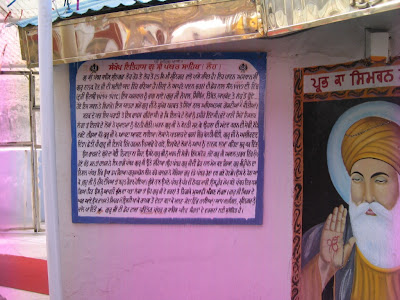With the arrival of the New Year, we also bring forward outstanding Sikh issues and concerns. This is the time to reflect whether, as a community, we have resolved some issues and made any progress on others.
As the Sikh community becomes more global, living in small remote communities at distant places, Sikh organisation (“jathebandi”) and central institutions are weakening. The latter have no clear strategy, no effective communication nor control mechanisms. Those holding high religious offices in Punjab are political stooges, incapable of interpreting Sikh ideology in the context of 21st Century issues and needs.
Challenges to Sikh identity and ideology e.g. the global challenge to Sikh turban, and the Sikh national Nanakshahi Calendar issue (which has now become a bit of a sad joke about shifting Gurpurab dates), spread of bogus deras and gurudoms, are just some of the many running sores to which there is no effective central response.
Regarding challenges to Sikh identity, in the absence of any timely advice or high profile action e.g. by lobbying governments and the United Nations, Sikhs have lost out on most fronts. Self-promoting individuals have taken over Sikh “representation”. Sikhs are still waiting to be counted as a distinct community in the UK. The current opposition behind the scenes by individuals to disrupt the working of the Sikh Council UK is another example of why we are failing in our corporate approach as a community.
Let me digress slightly before returning to the main theme. I write from South Australia after attending Guru Gobind Singh ji’s Parkaash Gupurab at the nearest and oldest Gurdwara in Adelaide. I compare the current Sikh position to that of over 20 years ago in this city. Then there were a few professional Sikhs, mainly from Malaysia, who held religious functions at one small Gurdwara. Now there are three gurdwaras run along different “maryadas”, and centred around certain groups or individuals. The old Gurdwara was moved to a new much larger site but is still run by the same core influential and affluent group. The Gurdwara remains user-friendly for non-Sikhs, and the management team takes interest in the image of the local Sikh community, but seem to have little interest in wider Australian or global Sikh affairs. To some extent, the same position is adopted by gurdwara managements in Sikh diaspora countries.
I mention the above because it is easier to study a smallish remote Sikh community like that of Adelaide, in order to understand wider global Sikh problems.
Therefore, while our central institutions are weakening and remain out-dated regarding their method of operation, the Sikh community is becoming more widespread. The need for global Sikh direction and unity through effective means of modern communication has been ignored for many years. One negative consequence is the total decentralisation of interpretation of Gurbani and Sikh personal and corporate “rehat” (i.e. way of life).
Panthic aims to promote Sikh corporate objectives and identity have come to a standstill. The milestone achievement of the House of Lords decision in the Mandla case, effectively recognised the Sikhs as a distinct people with own religion and socio-cultural tradition, identity and needs. Due to internal opposition by some, this legal recognition of Sikhs was not translated into the monitoring of the Sikhs as a distinct community in the UK, to be able to influence UK government policy in areas of equal opportunity, delivery of services and rights. Earlier efforts at national level unity have been frustrated by individual ambitions and factional divisions. The recent formation of the umbrella body, the Sikh Council UK, is a ray of hope in the New Year.
Sikh thinking needs to be guided by Gurbani as interpreted by Khalsa Panth. With the mushrooming of sant deras and bogus gurudoms, and the loss of the institution of Akal Takht Sahib to outside political interference, the process of interpreting Gurbani has been decentralised and is creating yet more divisions due to different “reht maryadas” (codes), encouraging bogus sant deras with spiritual heads and ritualism.
We have seen how the achievement of the Sikh national Nanakshahi Calendar as a global Sikh need, has been frustrated by the very institutions of SGPC and Akal Takht Sahib, which should have been promoting Sikh theo-political nationhood worldwide. These institutions are leaning towards “Bipran” (Brahmanic) practices when they should have been preaching and promoting one Sikh Reht Maryada and the Guru Granth-Guru Panth tradition.
An important UK achievement, which deserves wider publicity is the issue of guidelines relating to Sikh identity (kakaars and turban) which have been issued by the Equality and Human Rights Commission (EHRC) towards the end of last year. Many nationwide Sikh organisatons contributed in an exemplary manner to produce these guidelines.
As mentioned above, one consequence of the weakening of the institution of Akal Takht Sahib is that Sikhs in the diaspora have to increasingly rely on own centres for Gurbani research and interpretation through cyber networks. Let us hope that this would be a blessing in disguise to bring remote global Sikh communities together.
I conclude this articles with a positive musical note!
As and when I find time in my nomadic life, I listen to "Raag Ratan", a set of recently released 31 sudh raags in Guru Granth Sahib, sung truly in the Anand mode of "Raag ratan parwar paryia(n) Sabad gavan aayia(n)", by bibia(n) of the Gurmat Gian Group of Gurmat Gian Missionary College, Ludhiana. This is a trend setting exemplary achievment by mother daughter jatha of Bibi Gurpreet Kaur and Bibi Keerat Kaur for Sikh ladies in the diaspora.
I have yet to find time to "review" this great gift to the nation using my limited knowledge of classical raags. Nevertheless, this is a promise to Dr Manbir Singh, the Group motivator, which I shall keep.
Gurmukh Singh
Sewauk2005@yahoo.co.uk








